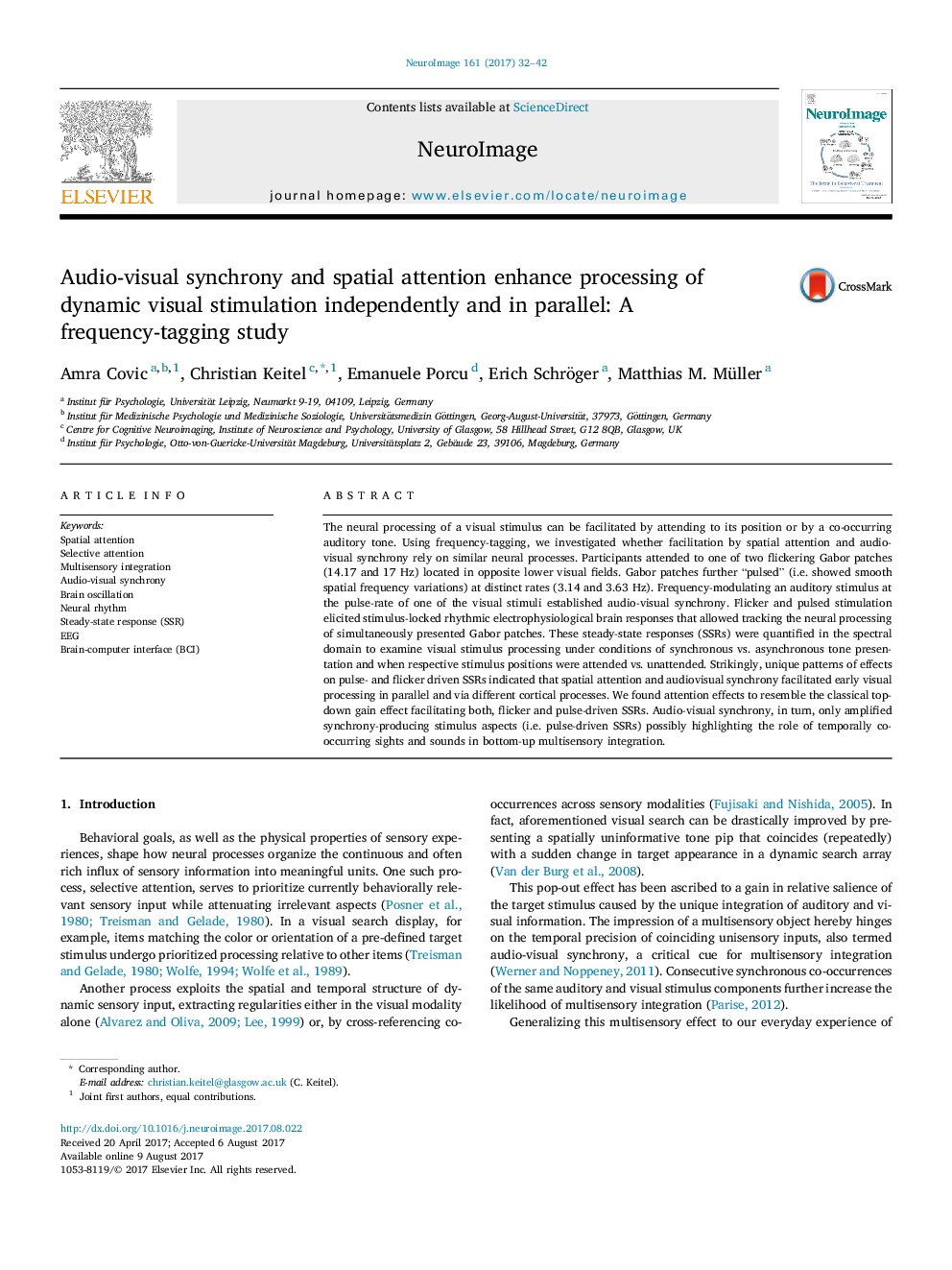| کد مقاله | کد نشریه | سال انتشار | مقاله انگلیسی | نسخه تمام متن |
|---|---|---|---|---|
| 5630809 | 1580849 | 2017 | 11 صفحه PDF | دانلود رایگان |
- Audio-visual (AV) synchrony and spatial attention enhance stimulus processing.
- We tested whether AV synchrony does so by attracting spatial attention.
- Frequency-tagging allowed monitoring simultaneous stimuli in EEG responses.
- This afforded separating AV synchrony and spatial attention gain effects.
- We found AV synchrony to bias processing independent of spatial attention.
The neural processing of a visual stimulus can be facilitated by attending to its position or by a co-occurring auditory tone. Using frequency-tagging, we investigated whether facilitation by spatial attention and audio-visual synchrony rely on similar neural processes. Participants attended to one of two flickering Gabor patches (14.17 and 17Â Hz) located in opposite lower visual fields. Gabor patches further “pulsed” (i.e. showed smooth spatial frequency variations) at distinct rates (3.14 and 3.63Â Hz). Frequency-modulating an auditory stimulus at the pulse-rate of one of the visual stimuli established audio-visual synchrony. Flicker and pulsed stimulation elicited stimulus-locked rhythmic electrophysiological brain responses that allowed tracking the neural processing of simultaneously presented Gabor patches. These steady-state responses (SSRs) were quantified in the spectral domain to examine visual stimulus processing under conditions of synchronous vs. asynchronous tone presentation and when respective stimulus positions were attended vs. unattended. Strikingly, unique patterns of effects on pulse- and flicker driven SSRs indicated that spatial attention and audiovisual synchrony facilitated early visual processing in parallel and via different cortical processes. We found attention effects to resemble the classical top-down gain effect facilitating both, flicker and pulse-driven SSRs. Audio-visual synchrony, in turn, only amplified synchrony-producing stimulus aspects (i.e. pulse-driven SSRs) possibly highlighting the role of temporally co-occurring sights and sounds in bottom-up multisensory integration.
Journal: NeuroImage - Volume 161, 1 November 2017, Pages 32-42
